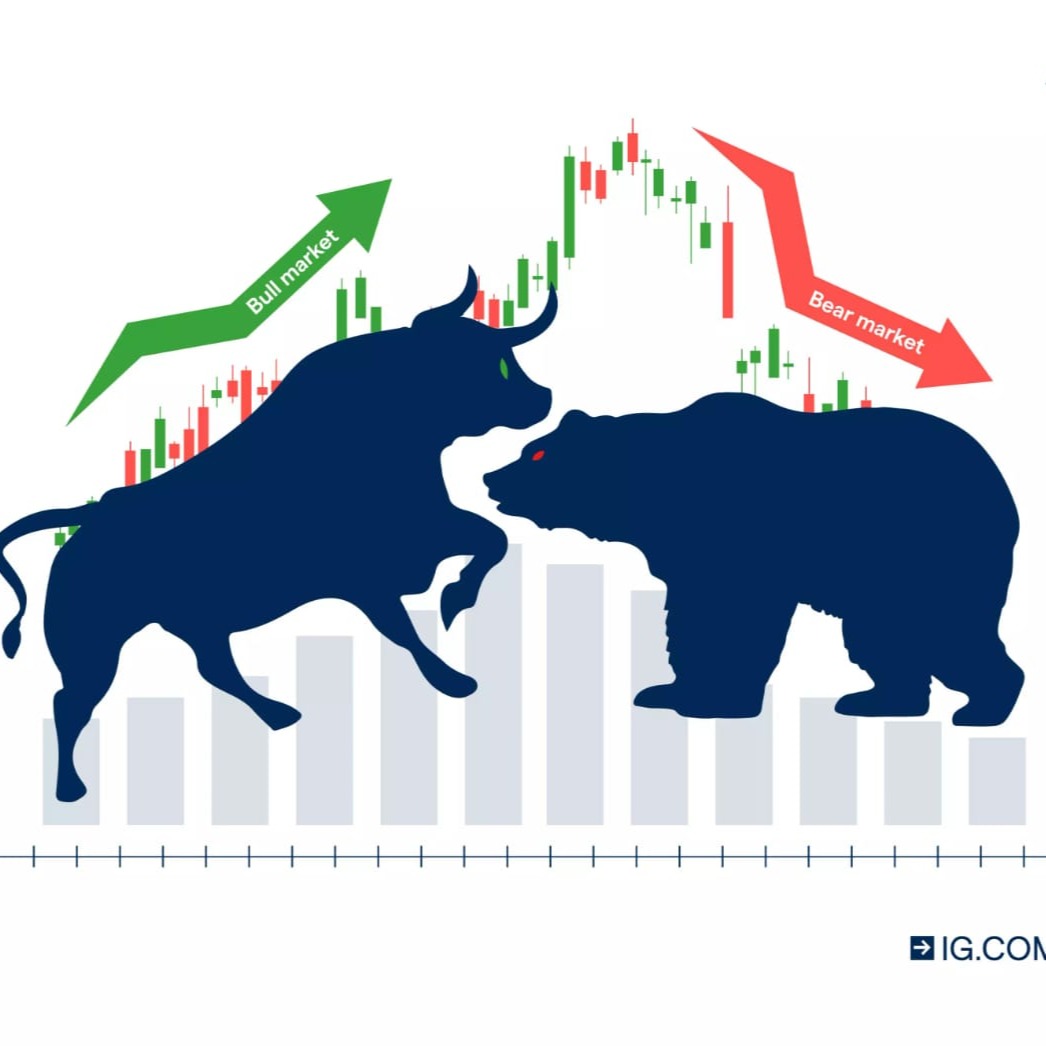
DeepBook Protocol narxiDEEP
UZS
Ro'yxatga olingan
so'm420.49UZS
+0.62%1D
O'zbekiston so'mi da DeepBook Protocol (DEEP) narxi so'm420.49 UZS bo'ladi.
DeepBook Protocol narx diagrammasi (UZS/DEEP)
Oxirgi yangilanish: 2025-12-21 01:20:43(UTC+0)
DEEP dan UZS ga konvertori
DEEP
UZS
1 DEEP = 420.49 UZS. 1 DeepBook Protocol (DEEP) ni UZS ga konvertatsiya qilishning joriy narxi 420.49. Bu stavka faqat ma'lumot uchun.
Bitget barcha yirik savdo platformalari orasida eng past tranzaksiya to'lovlarini taklif qiladi. Sizning VIP darajangiz qanchalik yuqori bo'lsa, tariflar shunchalik qulay bo'ladi.
UZSda bugungi DeepBook Protocol jonli narxi
Jonli DeepBook Protocol narxi bugungi kunda so'm420.49 UZS tashkil etadi, joriy bozor qiymati so'm1.89T. DeepBook Protocol narxi so'nggi 24 soat ichida 0.62% ga ko'tarildi va 24 soatlik savdo hajmi so'm117.61B. DEEP/UZS (DeepBook Protocol dan UZS ga) ayirboshlash kursi real vaqtda yangilanadi.
O'zbekiston so'mida 1 DeepBook Protocol qancha turadi?
Hozirda O'zbekiston so'midagi DeepBook Protocol (DEEP) narxi so'm420.49 UZS. Siz so'm420.49 ga 1 DEEP sotib olishingiz mumkin yoki so'm10 ga 0.02378 DEEP. Oxirgi 24 soat ichida, eng yuqori DEEP ni UZSga narxi so'm427.29 UZS edi va eng pastDEEP ni UZSga narxi so'm416.86 UZS.
Sizningcha, DeepBook Protocol narxi bugun oshadimi yoki tushadimi?
Jami ovozlar:
Ko'tarilish
0
Tushish
0
Ovoz berish ma'lumotlari har 24 soatda yangilanadi. U DeepBook Protocol narxlari tendentsiyasi bo'yicha hamjamiyat bashoratlarini aks ettiradi va investitsiya maslahati sifatida qabul qilinmasligi kerak.
DeepBook Protocol bozor ma'lumoti
Narx ko'rsatkichi (24S)
24S
24S past so'm416.8624S yuqori so'm427.29
Tarixiy maksimum (ATH):
so'm4,130.42
Narx o'zgarishi (24S):
+0.62%
Narx o'zgarishi (7K):
-12.51%
Narx o'zgarishi (1Y):
-70.20%
Bozor reytingi:
#171
Bozor kapitali:
so'm1,894,661,451,021.42
To’liq suyultirilgan bozor kapitali:
so'm1,894,661,451,021.42
Hajm (24s):
so'm117,613,942,787.16
Aylanma ta'minot:
4.51B DEEP
Maksimal ta'minot:
--
DeepBook Protocol narx tarixi (UZS)
DeepBook Protocol narxi o'tgan yil davomida -70.20% ni tashkil qiladi. O'tgan yildagi DEEPning UZS dagi eng yuqori narxi so'm4,130.42 va o'tgan yildagi DEEPning UZS dagi eng past narxi so'm382.37 edi.
VaqtNarx o'zgarishi (%) Eng past narx
Eng past narx Eng yuqori narx
Eng yuqori narx 
 Eng past narx
Eng past narx Eng yuqori narx
Eng yuqori narx 
24h+0.62%so'm416.86so'm427.29
7d-12.51%so'm382.37so'm494.62
30d-23.60%so'm382.97so'm612.73
90d-72.97%so'm382.37so'm1,828.75
1y-70.20%so'm382.37so'm4,130.42
Hamma vaqt-47.96%so'm129.23(2024-10-14, 1 yil avval)so'm4,130.42(2025-01-19, 336 kun oldin)
DeepBook Protocolning eng yuqori narxi qancha?
UZS da DEEPning 2025-01-19da qayd etilgan eng yuqori ko'rsatkichi (ATH) so'm4,130.42 tashkil etdi. DeepBook Protocol ATH bilan solishtirganda, joriy DeepBook Protocol narxi 89.82% ga pasaygan.
DeepBook Protocol ning eng past narxi qancha?
UZS da DEEPning 2024-10-14da qayd etilgan eng past ko'rsatkichi (ATL) so'm129.23 tashkil etdi. DeepBook Protocol ATL bilan solishtirganda, joriy DeepBook Protocol narxi 225.39% ga ko'tarilgan.
DeepBook Protocol narx bashorati
Qachon DEEPni sotib olish yaxshiroq? Hozir DEEPni sotib olishim yoki sotishim kerakmi?
DEEP sotib olish yoki sotish haqida qaror qabul qilayotganda, avvalo o'zingizning savdo strategiyangizni hisobga olishingiz kerak. Uzoq muddatli treyderlar va qisqa muddatli treyderlarning savdo faoliyati ham har xil bo'ladi. Bitget DEEP texnik tahlili sizga savdo uchun ma'lumotnoma berishi mumkin.
DEEP 4s texnik tahlil ga ko'ra, savdo signali Sotish.
DEEP 1k texnik tahlil ga ko'ra, savdo signali Sotish.
DEEP 1h texnik tahlil ga ko'ra, savdo signali Faol sotish.
2026 da DEEP narxi qanday bo'ladi?
Yillik + 5% o'sish prognozi bilan DeepBook Protocol(DEEP) tokeni narxi 2026-yilda so'm450.52 bo'lishi kutilmoqda. Joriy yil uchun prognoz qilingan narxdan kelib chiqqan holda, 2026-yil oxirigacha kelib DeepBook Protocol tokenga investitsiya kiritishdan umumiy daromad +5% bo'ladi. Batafsil ma'lumot: 2025, 2026, 2030-2050 y. DeepBook Protocol taxminiy narxi.DEEP narxi 2030-yilda nima bo'ladi?
Yillik +5% o'sish prognozi bilan DeepBook Protocol(DEEP) tokeni narxi 2030-yilda so'm547.61 bo'lishi kutilmoqda. Joriy yil uchun prognoz qilingan narxdan kelib chiqqan holda, 2030-yil oxirigacha kelib DeepBook Protocol tokenga investitsiya kiritishdan umumiy daromad 27.63% bo'ladi. Batafsil ma'lumot: 2025, 2026, 2030-2050 y. DeepBook Protocol taxminiy narxi.
Mashxur aksiyalar
Global DeepBook Protocol narxlari
Hozirda boshqa valyutalarda DeepBook Protocol qancha turadi? Oxirgi yangilanish: 2025-12-21 01:20:43(UTC+0)
DEEP dan ARS
Argentine Peso
ARS$50.74DEEP dan CNYChinese Yuan
¥0.25DEEP dan RUBRussian Ruble
₽2.82DEEP dan USDUnited States Dollar
$0.03DEEP dan EUREuro
€0.03DEEP dan CADCanadian Dollar
C$0.05DEEP dan PKRPakistani Rupee
₨9.8DEEP dan SARSaudi Riyal
ر.س0.13DEEP dan INRIndian Rupee
₹3.13DEEP dan JPYJapanese Yen
¥5.52DEEP dan GBPBritish Pound Sterling
£0.03DEEP dan BRLBrazilian Real
R$0.19DeepBook Protocol(DEEP) qanday sotib olinadi

Bepul Bitget hisobingizni yarating
Bitgetda elektron pochta manzilingiz/mobil telefon raqamingiz bilan ro'yxatdan o'ting va hisobingizni himoya qilish uchun kuchli parol yarating.

Hisobingizni tasdiqlang
Shaxsiy ma'lumotlaringizni to'ldirib va haqiqiy fotosuratli shaxsni tasdiqlovchi hujjatni yuklab, shaxsingizni tasdiqlang.

DEEP ni UZS ga konvertatsiyalang
Bitgetda savdo qilish uchun kriptovalyutalardan tanlang.
TTSS
DeepBook Protocol tangalarining hozirgi narxi qanday?
DeepBook Protocol tangalarining hozirgi narxini Bitget birjasida yoki boshqa ishonchli kriptovalyuta platformalarida tekshirish mumkin.
DeepBook Protocol narxiga ta'sir qiluvchi omillar qanday?
DeepBook Protocol narxiga ta'sir qiluvchi omillar qatoriga bozor talabi, ta'minot dinamikasi, umumiy bozor tendensiyalari va DeepBook Protocol ekotizimidagi rivojlanishlar kiradi.
DeepBook Protokolining narxi kelajakda oshadimi?
Gelecek narx harakatlarini bashorat qilish qiyin bo'lsada, investorlar ko'pincha bozor tendentsiyalarini va DeepBook Protokolida loyihalarning rivojlanishini tahlil qilib, o'zlariga ma'lum bashoratlar qilishadi.
Qayerda eng yaxshi narxda DeepBook Protocol sotib olishim mumkin?
Siz DeepBook Protocolni Bitget birjasida raqobatbardosh narxlarda sotib olishingiz mumkin, bu erda siz turli savdo variantlaridan foydalana olasiz.
DeepBook Protokoli yaxshi investitsiya emasmi?
DeepBook Protokolining investitsiya sifatida zarurligi shaxsiy tadqiqot va bozor sharoitlariga bog'liq. Investitsiya qilishdan oldin har doim risk darajangizni hisobga oling.
DeepBook Protokolining narxi uning tarixiy eng yuqori cho'qqisi bilan qanday taqqoslanadi?
DeepBook Protokolining narxini Bitget Exchange yoki turli kriptovalyuta tahlil platformalarida tarixiy narx ma'lumotlarini tekshirib, eng yuqori darajasiga solishtirish mumkin.
DeepBook Protocol uchun kelgusi yil narx prognozlari qanday?
DeepBook Protocol uchun narx prognozlari keng ko'lamda farq qiladi va turli bozor sharoitlari va tahlillarga bog'liq. Bozor yangiliklari va ekspert tahlillari bilan yangilanishni tavsiya etiladi.
DeepBook Protokolining narx tendlarini qanday kuzatishim mumkin?
DeepBook Protokolining narx tendlarini bozor tahlil vositalari yordamida va Bitget Exchange kabi platformalarda bevosita kuzatish mumkin.
DeepBook Protokolining narxiga ta'sir qilishi mumkin bo'lgan kelgusi tadbirlar bormi?
Texnologik yangilanishlar yoki hamkorlik e'lonlari kabi kelgusi tadbirlar DeepBook Protokolining narxiga ta'sir qilishi mumkin. Rasmiy kanallardan yangiliklarga diqqat qiling.
DeepBook Protokolining bozor kapitallashuvi qancha va bu narxiga qanday ta'sir qiladi?
DeepBook Protokoli bozor kapitallashuvi uning umumiy bozor qiymatini aks ettiradi, bu esa investorlarning qarashlariga va narx dinamikasiga ta'sir ko'rsatishi mumkin. Siz Bitget Exchange' da hozirgi bozor kapitallashuviga oid ma'lumotlarni topishingiz mumkin.
DeepBook Protocol ning hozirgi narxi qancha?
DeepBook Protocolning jonli narxi (DEEP/UZS) uchun so'm420.49, joriy bozor qiymati so'm1,894,661,451,021.42 UZS. Kripto bozorida 24/7 doimiy faoliyat tufayli DeepBook Protocol qiymati tez-tez o'zgarib turadi. DeepBook Protocolning real vaqtdagi joriy narxi va uning tarixiy maʼlumotlari Bitget’da mavjud.
DeepBook Protocol ning 24 soatlik savdo hajmi qancha?
Oxirgi 24 soat ichida DeepBook Protocol savdo hajmi so'm117.61B.
DeepBook Protocolning eng yuqori koʻrsatkichi qancha?
DeepBook Protocolning eng yuqori ko‘rsatkichi so'm4,130.42. Bu DeepBook Protocol ishga tushirilgandan beri eng yuqori narx hisoblanadi.
Bitget orqali DeepBook Protocol sotib olsam bo'ladimi?
Ha, DeepBook Protocol hozirda Bitget markazlashtirilgan birjasida mavjud. Batafsil koʻrsatmalar uchun foydali deepbook-protocol qanday sotib olinadi qoʻllanmamizni koʻrib chiqing.
DeepBook Protocol ga sarmoya kiritish orqali barqaror daromad olsam bo'ladimi?
Albatta, Bitget savdolaringizni avtomatlashtirish va daromad olish uchun aqlli savdo botlari bilan strategik savdo platformasi ni taqdim etadi.
Eng past toʻlov bilan DeepBook Protocol ni qayerdan sotib olsam boʻladi?
strategik savdo platformasi endi Bitget birjasida mavjud ekanligini ma’lum qilishdan mamnunmiz. Bitget treyderlar uchun foydali investitsiyalarni ta'minlash uchun sanoatning yetakchi savdo to'lovlari va tubanligini taklif qiladi.
Tegishli kriptovalyuta narxlari
Stellar Narxi (UZS)XRP Narxi (UZS)OFFICIAL TRUMP Narxi (UZS)Ethereum Narxi (UZS)Worldcoin Narxi (UZS)dogwifhat Narxi (UZS)Kaspa Narxi (UZS)Smooth Love Potion Narxi (UZS)Terra Narxi (UZS)Shiba Inu Narxi (UZS)Dogecoin Narxi (UZS)Pepe Narxi (UZS)Cardano Narxi (UZS)Bonk Narxi (UZS)Toncoin Narxi (UZS)Pi Narxi (UZS)Fartcoin Narxi (UZS)Bitcoin Narxi (UZS)Litecoin Narxi (UZS)WINkLink Narxi (UZS)
DeepBook Protocol (DEEP) ni qayerdan sotib olsam bo'ladi?
Video bo'limi — tezkor tekshiruv, tezkor savdo

Bitgetda shaxsni tasdqilashni qanday yakunlash va o'zingizni firibgarlikdan himoya qilish kerak
1. Bitget hisobingizga kiring.
2. Agar siz Bitgetda yangi bo'lsangiz, hisob yaratish bo'yicha o'quv qo'llanmamizni tomosha qiling.
3. Profilingiz belgisiga kursorni olib keling, "Tasdiqlanmagan" tugmasini bosing va "Tasdiqlash" tugmasini bosing.
4. Chiqaruvchi mamlakat yoki mintaqa va ID turini tanlang va ko'rsatmalarga amal qiling.
5. O'zingizning xohishingizga ko'ra "Mobil tekshiruv" yoki "Kompyuter" ni tanlang.
6. Ma'lumotlaringizni kiriting, shaxsingizni tasdiqlovchi hujjat nusxasini yuboring va selfi oling.
7. Arizangizni yuboring va bo'ldi, siz shaxsingizni tasdiqlashni tugatdingiz!
DeepBook Protocol ni 1 UZS ga sotib oling
Yangi Bitget foydalanuvchilari uchun 6200 USDT qiymatidagi xush kelibsiz to'plami!
DeepBook Protocol sotib oling
Kriptovalyutalarga sarmoya kiritish, jumladan Bitgetda onlayn DeepBook Protocol xarid qilish xavflarni o‘z ichiga oladi. Bitget DeepBook Protocol sotib olishning oson va qulay usullarini taklif etadi va birjada ko'rsatilgan kriptovalyuta haqida to'liq ma'lumot berishga harakat qiladi. Biroq, biz DeepBook Protocol xaridingizdan kelib chiqadigan natijalar uchun javobgar emasmiz. Taqdim etilgan barcha ma'lumotlar xarid uchun tavsiya etilmaydi.
DEEP dan UZS ga konvertori
DEEP
UZS
1 DEEP = 420.49 UZS. 1 DeepBook Protocol (DEEP) ni UZS ga konvertatsiya qilishning joriy narxi 420.49. Bu stavka faqat ma'lumot uchun.
Bitget barcha yirik savdo platformalari orasida eng past tranzaksiya to'lovlarini taklif qiladi. Sizning VIP darajangiz qanchalik yuqori bo'lsa, tariflar shunchalik qulay bo'ladi.
DEEP manbalar
DeepBook Protocol reyting
4.4
Teglar:
Shartnomalar:
0xdeeb...p::DEEP(Sui Network)
Bitget Insaytlari

BGUSER-SNXYLE69
2025/10/02 04:50
friends
$DEEP its my opinion 1$ and 10$ 😜 so what's ur opinion ? comment now 0.12
DEEP-0.57%

ScalpingX
2025/09/29 08:33
$DEEP - Mcap 426,44M$ - 88%/ 43,4K votes Bullish
SC02 M5 - pending Long order. Entry is within HVN + not affected by any weak zone, estimated stop-loss around 1.47%. The uptrend is in the 199th cycle, advance amplitude 11.85%.
#TradingSetup #CryptoInsights
DEEP-0.57%

Jahanzaib_Gondal
2025/09/18 04:25
$ZKC: Game Time. Analyzing the New $ZKC Power on Bitget.
Subtitle: The buzzer beater has sounded. $ZKC the native token for the elite zkSync ecosystem, is now live for trading on Bitget. We break down the pre-game analysis and the potential plays ahead.
Let's get straight to the scouting report.
The Player: Who is $ZKC?
$ZKC isn't just another name on the roster. It's the utility token for zkSync Era, a top-tier Layer-2 blockchain using advanced zero-knowledge (ZK) proofs to scale Ethereum. Think of it as the fuel and the franchise player for a faster, cheaper Ethereum experience.
· Position: Utility Token / Ecosystem Driver
· Key Stats: Powers network security, pays gas fees via account abstraction, and governs the future of the zkSync protocol.
· Draft Position: Highly touted prospect with a strong technical foundation.
The Market: First Quarter Analysis
The opening minutes of a new listing are all about volatility and momentum. $ZKC is hitting the court with a few key advantages:
· Strong Bench (Ecosystem): zkSync isn't a rookie. It has a deep bench of DeFi apps, NFTs, and users already playing on its network. This isn't a build-from-scratch project.
· Crowd Hype (Demand): Launching on a major exchange like Bitget provides instant liquidity and access to a global audience of traders. Expect a high-volume opening.
· The Game Plan (Tokenomics): The token is designed to be used, not just held. Real utility creates real demand.
Key Resistance Level (The Defense to Break): $0.95 - $1.05 This is the first major test.A strong breakout above this zone on high volume could signal a run-up.
Key Support Level (The Home-Court Advantage): $0.65 - $0.75 This is the floor.Holding this level is critical for maintaining bullish momentum. A break below could see a retreat to find stronger support.
The Playbook: Price Prediction Scenarios
This is not financial advice. This is a game plan based on market mechanics.
· Bull Case (The Championship Run): If Bitcoin holds strong and the altcoin market rallies, $ZKC's unique narrative could make it a standout performer.
Short-term target: $1.50 - $2.00. This would require sustained buying pressure and overall market greed.
· Base Case (A Solid Season): The most likely scenario is consolidation after the initial listing frenzy. Price action chops between $0.80 and $1.20 as the market digests the initial supply and demand. This is healthy for long-term growth.
· Bear Case (An Off Night): If the broader crypto market sells off, all new listings are vulnerable. A break below key support could see a test of $0.50 or lower. This is a risk every trader must account for.
Final Buzzer: How to Play It
1. Watch the Volume: High volume on green candles = strong buying interest. Low volume on pumps = a potential fakeout.
2. Track BTC: If Bitcoin tanks, it's hard for any altcoin, especially a new one, to rally. Know the macro climate.
3. Manage Your Risk: This is a new, volatile asset. Size your position accordingly. Don't go all-in on the first play.
$ZKC is now live. The game is on.
BTC-0.04%
FUEL+0.40%

YASIRALICTRADER🌟
2025/09/18 03:13
📊🔥 BTC Exchange Reserves Drop to Multi-Year Lows: What It Means for Price Action
The Bitcoin market has just hit a critical milestone: exchange reserves are now at multi-year lows. This development is more than just a data point—it’s a powerful signal of shifting market dynamics, investor sentiment, and long-term price potential. For traders, institutions, and retail holders alike, this trend could reshape how Bitcoin behaves in the months ahead. Let’s dive deep into what this means. 🚀
---
✨ 📉 BTC Exchange Reserves Explained
What are Exchange Reserves?
Exchange reserves represent the total amount of Bitcoin held in wallets controlled by centralized exchanges.
Why it Matters?
When reserves drop, it typically means fewer coins are available for immediate selling, suggesting that investors are moving their BTC to cold storage for long-term holding.
---
🚀 🐂 Supply Shock in the Making?
With fewer coins on exchanges, liquidity shrinks.
A shrinking supply often leads to a supply-demand imbalance, which can trigger sharp upward movements in price when demand increases.
This pattern has historically aligned with bullish rallies, particularly when reserves hit extreme lows.
---
📊 On-Chain Data Insights
Multi-year lows in reserves reflect a trend similar to pre-bull market phases in previous cycles.
Large holders (whales) are accumulating and moving BTC to cold wallets.
Institutional-grade custodianship is on the rise, indicating growing long-term confidence.
---
⚡ Key Investor Takeaways
📉 Less BTC available to sell → Lower selling pressure.
📈 Higher probability of price appreciation as demand meets reduced supply.
🐋 Whale accumulation signals smart money positioning for the next leg up.
---
🌍 Broader Market Implications
A decline in reserves could reduce volatility in the short term, as panic selling becomes harder with fewer coins on exchanges.
Long-term, it may amplify bullish momentum if mainstream demand surges—especially with ETFs and institutional inflows accelerating.
This aligns perfectly with the “digital gold” narrative as more investors treat Bitcoin as a long-term store of value rather than a trading asset.
---
🔮 Outlook: What’s Next for BTC?
If exchange reserves continue falling, expect higher resistance to downside pressure.
Potential catalysts like ETF inflows, Fed policy shifts, and global liquidity trends could magnify the impact of low reserves.
The stage may be set for another historic BTC rally, with scarcity as the fuel and institutional adoption as the spark.
---
✅ Final Thoughts
The drop in BTC exchange reserves is not just a technical metric—it’s a macro signal. Investors are pulling Bitcoin off exchanges because they believe in its long-term potential. As reserves decline, the supply squeeze narrative strengthens, setting Bitcoin up for possible explosive price movements in the near future.
👉 In short: Low reserves = strong hands = bullish signal. 🐂🔥
---
BTC-0.04%
FUEL+0.40%

BGUSER-VSKY448K
2025/09/18 01:41
$SPON another deep dumpbin
DEEP-0.57%
Savdo
Earn
DEEP Bitget Birjasi da savdo qilish mumkin va Bitget Wallet da himoyada saqlanishi mumkin. Bitget Birjasi ham DEEP savdolarini qo’llab-quvvatlaydigan birinchi CEX platformalaridan biridir.
Bitgetda DEEP savdosini amalga oshirishingiz mumkin.DEEP/USDT
SpotDEEP/USDT
USDT-M FyuchersiBitgetda yangi ro'yxatga olingan tangalar narxi








